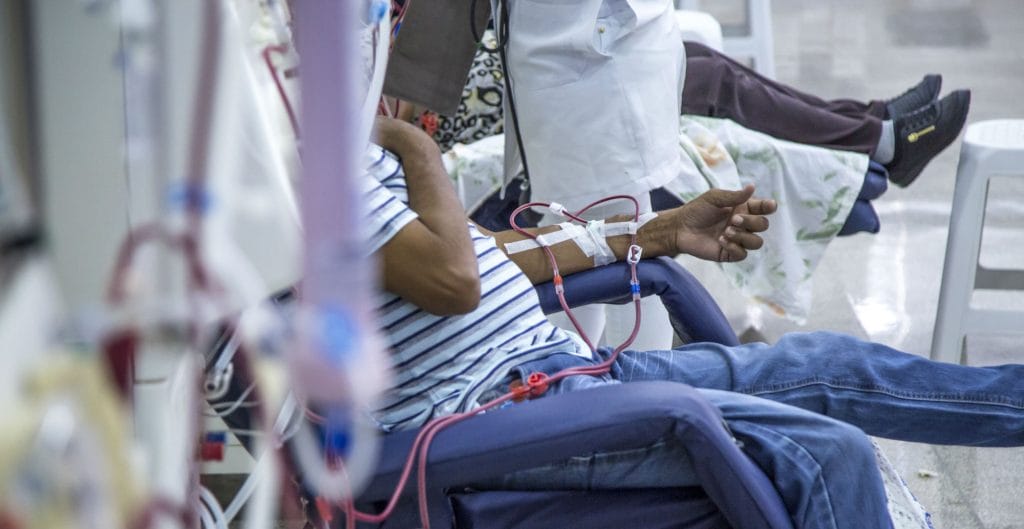Photo from Perpetual Help Medical Center
Providing safe and effective hemodialysis treatment goes beyond the dialysis machine itself—it starts with water. The quality of dialysis water directly affects patient health outcomes, as patients are exposed to 120–200 liters of treated water per session and in the Philippines, the Department of Health (DOH) has established clear guidelines to ensure this vital element is consistently safe.
One system gaining attention for exceeding these standards is the AAMI Hi-Flow UF-type water treatment system, a concept supported by AAMI and ISO guidelines as early as 2014 and adopted in recent dialysis water system designs worldwide.
Overview of DOH Guidelines on Dialysis Water Treatment

Photo from The Ruth Foundation
The DOH mandates specific processes and monitoring protocols through its administrative orders:
🔹 AO 2012-0001
Outlines the licensure requirements for dialysis facilities, including:
- A complete water treatment line: pre-treatment, reverse osmosis (RO), and post-treatment.
- Compliance with AAMI or equivalent water quality standards.
🔹 AO 2013-0003
Focuses on:
- Regular testing of water (chemical monthly; microbial weekly).
- Use of Ultrafiltration (UF) post-RO for microbial and endotoxin control.
- Establishing a Water Quality Management Program within the facility.
International Benchmark: ISO 23500 & AAMI Standards
The ISO 23500 Series (aligned with AAMI RD52/RD62 and updated with the AAMI TIR 34:2014 on High-Flow Water Systems) provides globally recognized parameters for dialysis water quality:
Parameter | Standard Dialysis Water | Ultrapure Dialysis Water |
Bacteria (CFU/mL) | < 100 | < 0.1 |
Endotoxin (EU/mL) | < 0.25 | < 0.03 |
Heavy Metals (e.g., Al) | < 0.01 mg/L | Same |
The AAMI TIR 34:2014 and updates to the ISO 23500-5:2019 standard recommend Ultrafiltration (UF) membranes as a post-RO solution to meet ultrapure water targets—especially important for facilities using online hemodiafiltration (HDF).
AAMI Hi-Flow UF-Type System: Features & Compliance
The AAMI Hi-Flow UF-Type System, introduced into widespread practice following the 2014 AAMI guidance, is designed to produce ultrapure dialysis water by incorporating Ultrafiltration membranes after the RO stage. Key highlights include:
- ✅ Bacterial and endotoxin removal to levels well within ISO 23500:2019 requirements.
- ✅ High-flow output suitable for multiple dialysis stations.
- ✅ UF membranes with pore sizes <0.01 µm as a final barrier before the dialysis machine.
Requirement | DOH/ISO Standard | AAMI Hi-Flow UF System (since 2014) | Compliant? |
Reverse Osmosis Treatment | Required | Included | ✅ Yes |
Post-Treatment (UF) | Required for ultrapure water | Included | ✅ Yes |
Bacteria < 0.1 CFU/mL | Required for ultrapure water | Achieved | ✅ Yes |
Endotoxin < 0.03 EU/mL | Required for ultrapure water | Achieved | ✅ Yes |
Routine Testing Capability | Monthly (chem), Weekly (micro) | Compatible with inline monitoring | ✅ Yes |
Is Your Dialysis Center’s Water System Safe, Compliant, and Reliable?
Hemodialysis requires ultra-pure water to ensure patient safety and equipment longevity. Any compromise in water quality can lead to serious health risks and costly operational downtime.
Whether you’re starting a new facility or upgrading an existing one, we provide specialized water treatment solutions tailored to dialysis centers. Our systems are built to meet DOH standards and ensure uninterrupted, safe treatment—even during supply disruptions.
Ready to take the next step? Fill out our contact form and let our experts guide you toward a safer, more reliable water solution for your dialysis operations.
